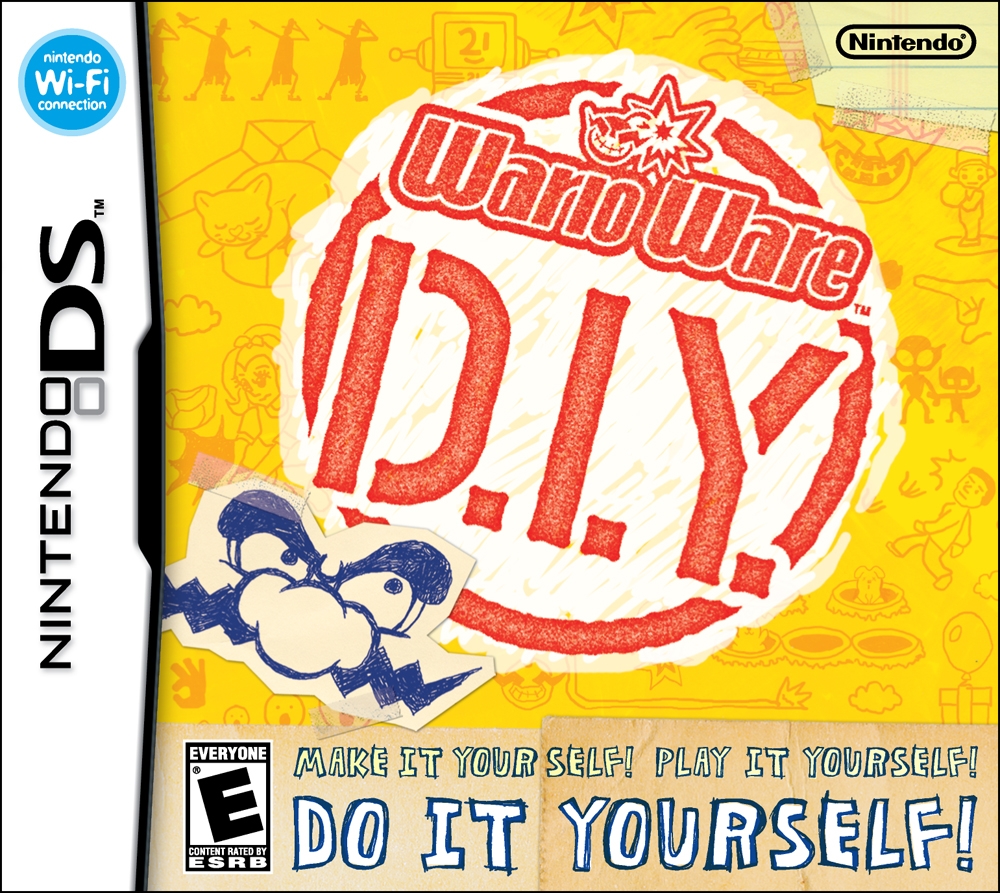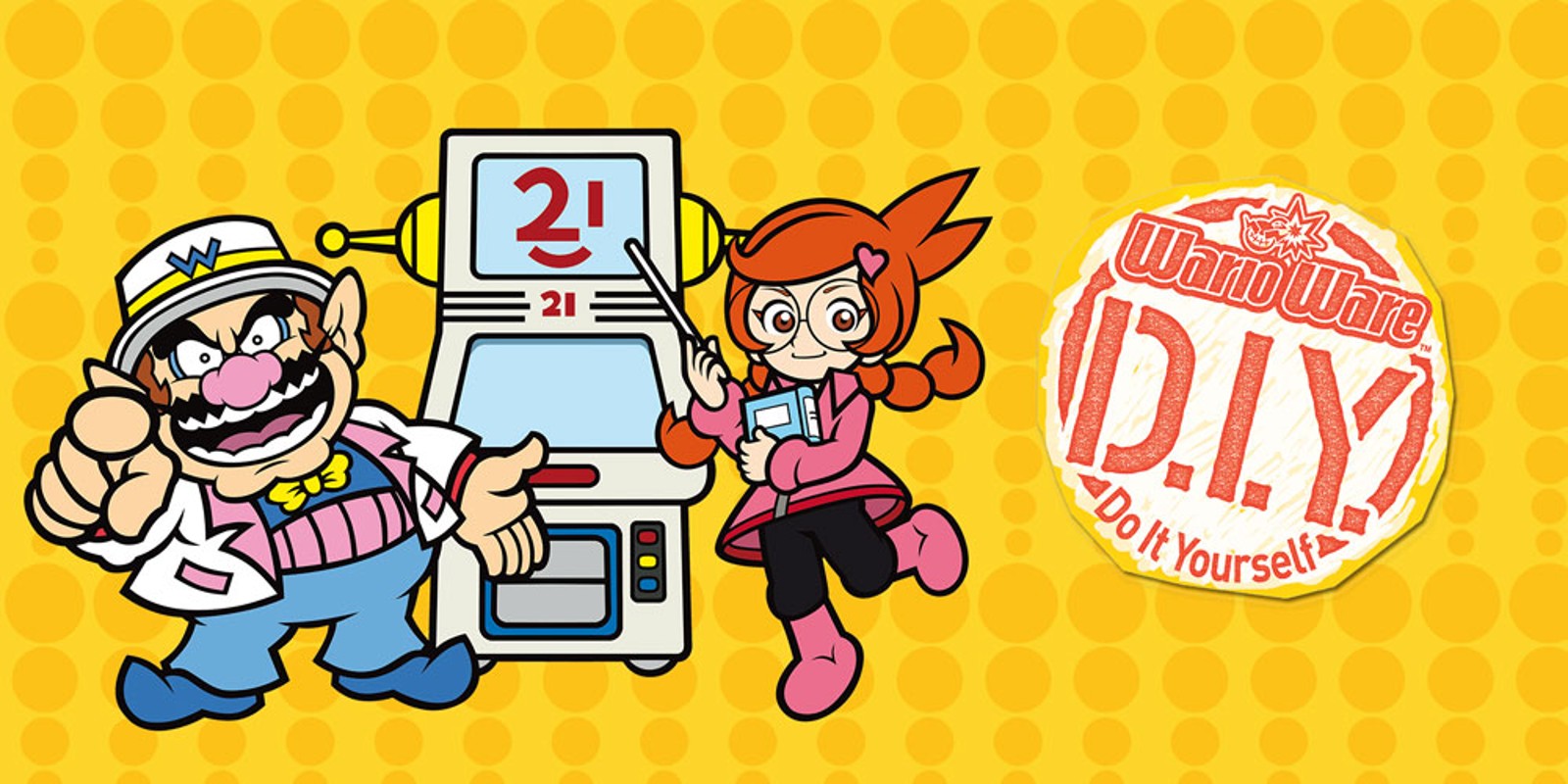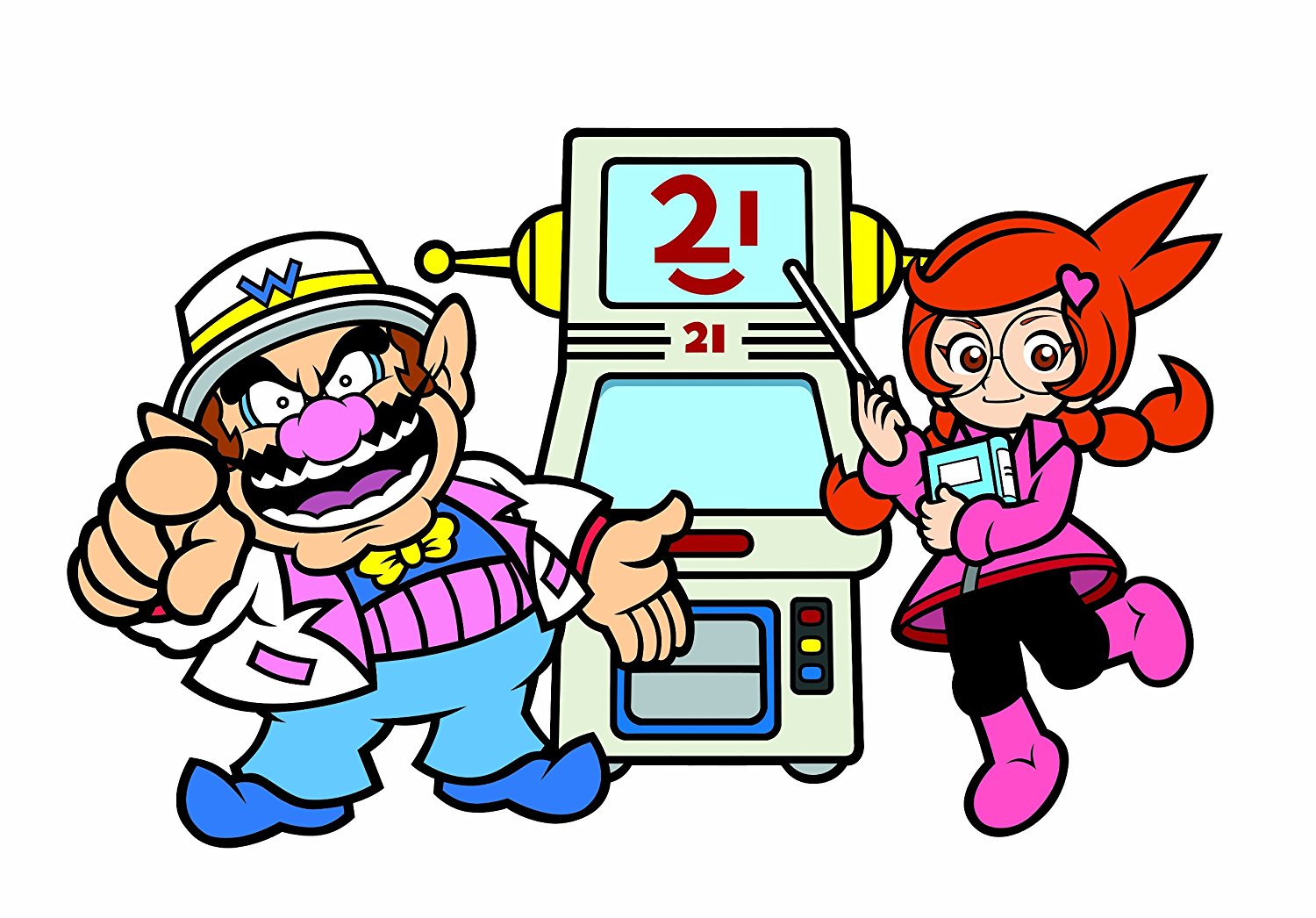What makes this unique puzzle-action game so engaging and enduring? A robust and innovative approach to gameplay.
This series of games, often characterized by rapid-fire, micro-tasking challenges, presents a distinctive gameplay experience. Players are presented with a stream of quick-response actions, requiring split-second decisions and precise timing. The unique appeal often stems from the variety of mini-games; from button-mashing feats to intricate choreographed sequences. This dynamic framework encourages quick reflexes and adaptive gameplay.
The series' enduring appeal stems from its innovative and ever-evolving approach to quick-reaction gameplay. The core concept, with its emphasis on rapid-fire micro-tasks, fosters a sense of accomplishment with each successful challenge. A multitude of players have praised the title's entertaining and highly replayable features, adding to the game's longevity and value.
Now let's delve into the specifics of the game's design, and how these elements contribute to its overall popularity.
WarioWare DIY
The unique gameplay structure of WarioWare DIY is characterized by a variety of features. Understanding these elements provides a more comprehensive view of the game.
- Micro-tasks
- Rapid-fire challenges
- Diverse mini-games
- Timed precision
- Creative gameplay
- Replayability
The core mechanics of WarioWare DIY emphasize rapid-fire, micro-task based challenges. Diverse mini-games, requiring timed precision, provide for a range of gameplay experiences. This structured approach to gameplay, along with the variety of challenges and diverse mini-games, fosters strong replayability. The focus on micro-tasks and creative challenges sets the title apart from other similar games. These elements are interconnected to create a stimulating and consistently engaging experience for players.
- Vedang Raina Parents Net Worth Family Fortune Revealed
- Tom Selleck 2024 Politics Potential Oscar Buzz
1. Micro-tasks
Micro-tasks are fundamental to the gameplay experience of the WarioWare series, especially evident in DIY. These small, focused actions, often involving rapid button presses or precise timing, form the core of the game's dynamic. The effectiveness and engaging nature of the experience hinge significantly on how these micro-tasks are designed and executed.
- Design and Implementation of Micro-tasks
The design of micro-tasks in WarioWare DIY is crucial. These tasks must be simple enough to comprehend yet challenging enough to demand quick reflexes. Effective implementation relies on clear visual cues, intuitive controls, and appropriate pacing. Poor design can lead to frustration and diminish player engagement. Examples include tasks ranging from simple button presses to intricate sequences requiring specific timing and precise coordination.
- Variety and Challenge
A diverse range of micro-tasks is essential to maintain engagement. Repetitive, identical tasks quickly become monotonous. The game incorporates a broad spectrum of actions, from simple button presses and analog stick movements to more complex sequences involving multiple inputs. This variety introduces a constant challenge and encourages continuous skill development.
- Rapid-Fire Nature and Reaction Time
The inherent rapid-fire nature of the micro-tasks necessitates swift reaction times. This aspect of the game design actively challenges players to react to stimuli quickly and precisely. The constant barrage of quick tasks requires honed reflexes and a capacity for rapid decision-making. This pressure can create a thrilling sense of engagement.
- Impact on Replayability and Skill Progression
The inherent variety and consistent challenge inherent in the design of these micro-tasks contribute significantly to replayability. Repeated playthroughs offer opportunities to master tasks and perfect timing. This creates a dynamic feedback loop wherein players refine their skills and enjoy progressively increasing their performance.
The integration of micro-tasks in WarioWare DIY fundamentally shapes the game's gameplay experience. The game's structure revolves around these small, focused actions, creating a dynamic and engaging environment. The successful implementation of micro-tasks is crucial for motivating players through repetitive interaction and skill advancement.
2. Rapid-fire challenges
Rapid-fire challenges are a defining characteristic of the WarioWare series, particularly evident in DIY. This gameplay mechanism relies on the rapid execution of micro-tasks to achieve success. The inherent challenge of these quick-response actions fosters both a sense of excitement and skill development.
- Reaction Time and Reflexes
The core of rapid-fire challenges lies in demanding immediate responses to stimuli. This mechanism necessitates heightened reaction time and rapid reflexes. The game design meticulously creates scenarios requiring split-second decisions, challenging players to process visual and audio cues and react in a timely manner. These challenges mirror real-world scenarios, such as athletic competitions, emergency situations, or complex operating environments.
- Accuracy and Precision
Beyond speed, rapid-fire challenges demand accuracy and precision in execution. Success hinges not just on how quickly actions are performed but also on how precisely they are executed. Imperceptible delays or minor errors can lead to failure. This aspect of the challenges emphasizes the importance of meticulous execution and refined motor skills, exemplified by demanding activities like shooting, surgery, and highly specialized work.
- Adaptive Gameplay and Skill Development
The ongoing presentation of diverse tasks ensures continual challenge and opportunity for skill improvement. Players must adapt to a dynamic stream of challenges, continuously learning to anticipate patterns, predict sequences, and optimize their actions. This iterative process of adaptation and improvement mirrors learning processes and skill development in various domains, including musical performance, sports, and complex software applications.
- Thematic Integration and Gameplay Flow
Integration with the game's overarching themes and overall gameplay flow is crucial. Rapid-fire challenges enhance the game's pacing and contribute to its overall engaging nature. The consistent stream of quick-response actions creates a captivating and dynamic environment that maintains player interest. This integration ensures that the rapid-fire challenges enhance, rather than detract from, the narrative experience.
In conclusion, the rapid-fire challenges in WarioWare DIY are not mere obstacles but integral elements that propel the gameplay experience. These challenges require speed, accuracy, and adaptability. The varied tasks not only demand immediate responses but also encourage continuous learning and skill enhancement, making them a critical component of the game's overall design and appeal. This aspect reinforces the unique approach to gameplay and elevates the experience beyond simple button-mashing.
3. Diverse mini-games
A key element contributing to the appeal and longevity of WarioWare DIY is the diverse range of mini-games. This variety is fundamental to the game's design, driving its replayability and providing a constantly evolving challenge. The sheer number and thematic breadth of mini-games contribute directly to the game's multifaceted experience.
The incorporation of diverse mini-games acts as a catalyst for maintaining player engagement. Varied gameplay challenges, ranging from simple button presses to elaborate coordinated actions, prevent monotony. This diversity mirrors the dynamic nature of real-world tasks and activities, offering a sense of accomplishment with each successful mini-game completion. Examples range from precise timed button presses in a rhythmic game to complex sequences requiring coordination between multiple inputs. The variety extends across themes and mechanics. This exemplifies the principle of diverse stimulation in learning and cognitive engagement, which promotes greater retention and interest. The inclusion of diverse challenges, including those found in everyday life, such as tasks related to cooking, gardening, or simple home maintenance, adds a realistic and engaging context to the gameplay. This wide-ranging experience allows players to connect with the game through personal familiarity and enhances their ability to recall and apply these actions.
In summary, the diverse range of mini-games in WarioWare DIY is a crucial element for maintaining engagement and achieving lasting appeal. This variety extends the gameplay experience beyond simply repetitive tasks, drawing inspiration from a broad spectrum of activities and fostering a more dynamic, engaging, and effective learning process. The success of the game is intrinsically linked to the richness and breadth of these diverse mini-games, making them integral to the game's overall impact and player enjoyment.
4. Timed precision
Timed precision is a critical component of the WarioWare DIY experience. The game's success hinges on players' ability to perform actions within specific time windows. This tight coupling of actions and timing is essential for successful completion of tasks. The game's inherent emphasis on speed and accuracy reflects real-world scenarios requiring precise timing, such as athletic competitions or complex industrial processes where failures stemming from timing issues can be significant. The reliance on rapid decision-making and rapid responses within these time constraints is a significant aspect of the game's design.
The game's intricate mini-games emphasize the importance of reaction time. Successfully completing tasks necessitates an understanding of the timing requirements of each action. The precision with which a button is pressed, the precise moment a lever is pulled, or the exact timing of a sequence all contribute to the successful completion of each mini-game. This exemplifies how real-world tasks requiring precise control often revolve around similar concepts of timing and accuracy. Examples range from medical procedures requiring precise timing to automated manufacturing processes. In essence, understanding timed precision in WarioWare DIY offers valuable insight into the significance of precision and reaction time in numerous professional and everyday situations.
In conclusion, timed precision is not merely a game mechanic in WarioWare DIY but a key element reflecting real-world applications. The game's dependence on split-second decision-making and action timing provides players with a tangible experience of how crucial timed precision can be. Successfully mastering timed precision in the game enhances the understanding of similar demands in real-life contexts, demonstrating the importance of accuracy and responsiveness.
5. Creative gameplay
The concept of "creative gameplay" within WarioWare DIY is not about artistic expression in the traditional sense. Instead, it focuses on the game's capacity to foster inventive approaches to overcoming challenges. This creativity manifests in players' strategies, adaptation to novel situations, and their ability to approach problems through diverse means.
- Adaptation and Problem Solving
The core of creative gameplay lies in adapting to unforeseen situations. The rapid-fire, micro-task nature of the game necessitates a dynamic approach. Players must adapt their strategies in response to each mini-game. For example, a player might learn to anticipate the timing of a specific action based on visual cues and environmental context. This adaptability mirrors problem-solving in real-world scenarios where changing circumstances necessitate creative solutions. This facet highlights the game's ability to encourage mental flexibility and responsiveness.
- Strategy and Pattern Recognition
Successful completion of tasks often requires recognizing patterns in the sequence of mini-games. Players must analyze and interpret these patterns to develop strategies for optimized performance. A player might notice a recurring pattern in visual or auditory cues, enabling them to predict the timing of subsequent actions and increase their success rate. This skill of pattern recognition aligns with problem-solving approaches in various fields, requiring observation, analysis, and strategic planning.
- Innovation in Response to Challenge
The diverse and often unexpected nature of mini-games promotes innovative approaches. Players may discover alternative ways to complete a task. For instance, a player might find a less obvious button sequence that produces a desired outcome. This innovation aligns with real-life situations, where novel approaches to issues are vital for finding solutions. This highlights the game's potential to encourage inventive thinking and resourceful problem-solving.
- Leveraging Game Mechanics for Advantage
The game mechanics often present opportunities for creativity. Players can use these mechanics to their advantage, potentially discovering hidden shortcuts or strategies for optimal performance. For example, a player might learn to exploit specific timing windows for multiple actions, leading to quicker completions. This mirrors resourcefulness and adaptation in practical settings where utilizing available tools effectively is crucial for success.
Ultimately, the "creative gameplay" within WarioWare DIY underscores the game's capacity to foster adaptive thinking and resourceful problem-solving. The emphasis on rapid responses and diverse challenges requires players to develop innovative approaches to complete each task, highlighting the game's potential to encourage a strategic and adaptable mindset. This iterative process of skill development and refined strategies contributes significantly to the game's replayability and engagement.
6. Replayability
Replayability in WarioWare DIY is a key factor contributing to its enduring appeal. The game's design prioritizes a continuous challenge, encouraging repeated playthroughs. This aspect necessitates a comprehensive exploration of the mechanisms underpinning this characteristic. The design prioritizes providing substantial value over multiple playthroughs. The value proposition of the game extends beyond initial playthroughs.
- Diverse Mini-Games and Micro-Tasks
The sheer variety of mini-games and micro-tasks is a major contributor to replayability. The breadth of tasks, from simple button presses to complex sequences, ensures that players encounter novel challenges in each playthrough. This contrasts with games offering limited or repetitive gameplay loops. The game's continual challenge mirrors real-world experiences where tasks and circumstances vary significantly, necessitating adaptable responses in both the game and real life. This diversity is critical in maintaining engagement and preventing player fatigue. The game's structure capitalizes on the concept of varied cognitive stimuli.
- Progressive Skill Development
Success in WarioWare DIY often requires mastering specific timing windows and action sequences within micro-tasks. Repeated playthroughs allow players to refine their reflexes and fine-tune their actions. This progressive skill development offers a tangible reward for multiple attempts and encourages ongoing engagement. This parallels other skill-based games where players improve through repetition and practice. Successfully mastering these challenges fosters a sense of accomplishment and motivates players to return for further improvement.
- Hidden Content and Strategies
The game's design incorporates hidden content and strategic approaches. Repeated playthroughs often reveal previously undiscovered mini-games, unlocking challenges, or exposing more efficient strategies for completing existing tasks. This hidden content enhances replayability by creating a sense of discovery and providing renewed motivation for revisiting the game. These hidden elements mirror hidden features in other types of software or products, where repeated usage reveals previously undiscovered details or improvements.
- Social Engagement and Competition
WarioWare DIY often includes multiplayer options and leaderboards. The opportunity for competition and social interaction extends the game's appeal beyond individual playthroughs. Players may return to challenge themselves and their friends, providing ongoing motivation for repetition and skill refinement. This social element connects with other game mechanics that encourage social engagement through competition or collaboration, creating a valuable component for sustained engagement.
The mechanisms surrounding replayability in WarioWare DIY are carefully designed to provide continual value and engagement. The diverse challenges, potential for skill development, hidden content, and social elements ensure that players experience novel interactions and maintain interest. This demonstrates a thoughtful approach to designing a game that consistently delivers a fresh and engaging experience with repeated playthroughs. This structure creates a long-term value proposition that extends beyond individual game sessions.
Frequently Asked Questions
This section addresses common queries regarding WarioWare DIY, providing concise and informative answers to typical concerns.
Question 1: What sets WarioWare DIY apart from other games?
WarioWare DIY's distinctive feature lies in its unique gameplay structure. Rapid-fire, micro-task-based challenges form the core experience. This contrasts with traditional gameplay loops featuring extended sequences or narratives. The focus on quick reflexes and precise timing, alongside a diverse range of mini-games, creates a distinct and engaging experience.
Question 2: How challenging is WarioWare DIY?
The difficulty of WarioWare DIY is highly dependent on player skill. Early mini-games often present simpler challenges, but as players progress, the tasks increase in complexity and require enhanced reflexes and precision. The variety of mini-games and micro-tasks introduces constant challenges, ensuring continuous engagement.
Question 3: Is WarioWare DIY suitable for all ages?
WarioWare DIY is generally considered suitable for players of varied ages, but this depends on individual maturity levels and personal sensitivity to certain types of challenges. The game's focus on quick reflexes and micro-tasks makes it potentially unsuitable for those easily overwhelmed or with sensitivities to rapid-fire gameplay.
Question 4: What are the core gameplay elements of WarioWare DIY?
The game relies on several key elements. Micro-tasks are rapid-fire actions requiring quick responses. Mini-games feature diverse challenges, demanding reflexes and timing precision. These elements create a continuous flow of quick-response challenges, leading to the game's distinct gameplay structure.
Question 5: How does the game utilize timed precision in its gameplay?
Timed precision is fundamental to WarioWare DIY. Mini-games often require actions within specific time windows. Accurate timing and rapid responses are crucial for successful completion. The degree of required precision varies across different mini-games, further challenging players to hone their reflexes and reactions.
Understanding these common queries will help players better appreciate WarioWare DIY's gameplay mechanics and overall experience.
Moving forward, we will delve into specific mini-games, providing deeper insights into each game's unique characteristics and mechanics.
Conclusion
WarioWare DIY presents a unique approach to puzzle-action gameplay. Its core mechanism relies on a rapid-fire sequence of micro-tasks, demanding precise timing and quick reflexes. The game's diverse mini-games and varied challenges contribute significantly to its replayability. Timed precision is essential to success, fostering a need for adaptation and strategic thinking. The consistent flow of diverse micro-tasks, coupled with the capacity for skill development and hidden content, ensures a continually evolving challenge. The game's multifaceted design and innovative use of quick-response mechanics set it apart from other puzzle-action games, providing a unique and engaging experience.
WarioWare DIY's lasting appeal lies in its ability to continuously stimulate players. The constant stream of novel challenges and varied gameplay, coupled with opportunities for skill improvement, ensures substantial replay value. This game successfully integrates a focus on quick reflexes and precise timing with a broad range of creative gameplay opportunities. The game's enduring appeal suggests its successful adaptation of core mechanics to maintain player engagement throughout repeated playthroughs. Furthermore, the game's potential for social interaction via multiplayer options emphasizes its ability to transcend individual engagement.
- Survivor Jonathan Penners Journey A Look Back
- Jennifer Garner Ben Affleck Wedding A Look Back At Their Romance


